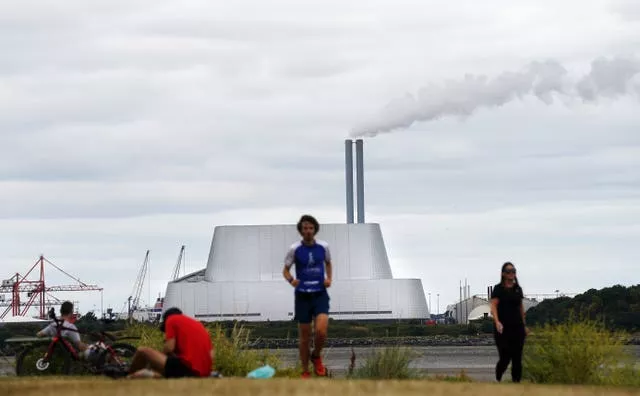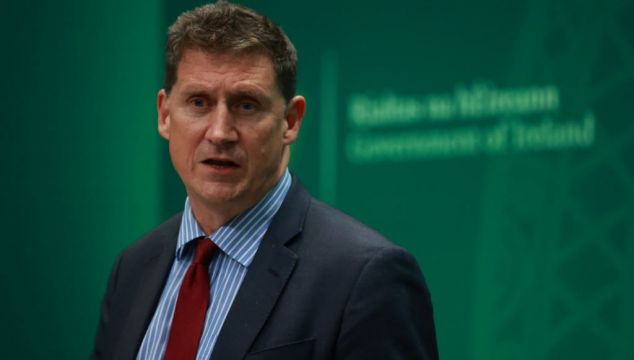Ireland has been warned that it needs to make faster progress in cutting emissions after a report showed that a carbon reduction target was not met last year.
Concern has been expressed by environmental groups in response to the latest figures from the Environmental Protection Agency (EPA), which show Ireland’s greenhouse gas emissions decreased by just 1.9 per cent in 2022.
Ireland should be reaching a six per cent or seven per cent reduction a year from 2021 to 2025 – and the shortfall means that a 12.4 per cent annual reduction is now needed for the remaining years, which has been called “near impossible”.
“If you look at the (12.4 per cent) reduction, that would be higher than we’ve achieved previously in Ireland, even during the recession,” EPA director-general Laura Burke told RTÉ Radio.
It also means 47 per cent of Ireland’s carbon budget for 2021-25 has been used in the first two years.
Minister for Transport and Environment Eamon Ryan has acknowledged the challenge Ireland faces to reduce its emissions while its economy and population grows, and admitted that it needs to make progress faster.
But Mr Ryan also said there was evidence of “green shoots” of progress in reducing emissions and developing public transport.
Chairwoman of the Climate Change Advisory Council Marie Donnelly stated that Ireland was “not on track” to achieve its emissions targets.
She added that the rise in emissions in the transport sector was a result of a lack of government policy.
“While transport emissions dropped during Covid, they rebounded because there were not active policies in place to maintain low emissions levels.
“Investment and support is needed now, to incentivise a switch to public transport and an uplift in active travel.”
She added: “The best-performing sector – residential buildings – is delivering benefits on the ground through the retrofitting of cold damp homes and eliminating harmful heating fuels which have high levels of greenhouse gas emissions.”
The EPA found that power generation emissions decreased by 1.9% last year due to a reduction in coal, oil and peat use and more renewable energy.
Agriculture emissions fell by 1.2 per cent, driven by reduced fertiliser use which offset the impact of an increase in livestock numbers.
Residential emissions decreased by 12.7 per cent, influenced by the impact of higher fuel prices, new regulations that ban the use of smoky fuel and milder weather.

However, transport emissions increased by 6 per cent as the rebound to pre-pandemic levels continued.
The agency said current decarbonisation actions are being outpaced by increased energy demand across the economy and dependence on fossil fuels for energy generation.
It warned that a growing economy, with high employment, will continue to produce emissions if cleaner and alternatives sources of energy are not used.
Mr Ryan said it showed “important green shoots of change” but admitted that “we do need to see our emissions fall at an even faster rate”.
The Green Party leader also said that an increase in the transport sector’s emissions was expected as people resumed their commute to work and school after the pandemic.
“It’s also worth noting that transport emissions are 4.6% below their pre-pandemic levels in 2019, indicating an overall downward trajectory,” he said.
“We are going to have to make further progress, however, speeding up the switch to public transport and active travel.
“We will continue to revise our climate plans to ensure that we scale up and speed up our actions. This is going to be good for the country, is a vital necessity as we are see global temperatures meet unprecedented levels.”

Social Democrats TD Jennifer Whitmore said that as Ireland needs a six per cent to 7 per cent reduction in carbon emissions annually, the overall target is now “near impossible” to reach.
“In order to make up for previous failures to reach our targets, we now need to make an annual reduction of 12.4% to meet our carbon reduction targets for this period. That level of reduction is going to be near impossible,” she said.
“It is also important to note that the reductions in residential and agriculture, while welcome, are not driven by government policy.”
She said that the reductions were due to lower energy usage because of high prices and a mild winter.
“There are significant questions to be asked about what will happen when energy prices go back to pre-2023 rates,” she said.







